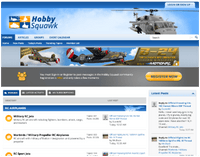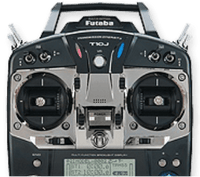Making the Jump: A Foam-to-Wood ARF Transition Guide
by Chris WolfeMaking the Jump: A Foam-to-Wood ARF Transition Guide
Thinking about upgrading from foam to a wood ARF? You’re not alone. For many RC pilots, transitioning from foam models to wood models marks a rewarding next step in the hobby. Wood ARFs (Almost-Ready-to-Fly) offer a different kind of experience—one focused on refined craftsmanship, structural rigidity, and flight performance. In this guide, we’ll walk you through what to expect, what you need, and why wood ARFs might be your next favorite model.
Why Transition to Wood ARFs?
1. Flight Performance You Can Feel
Wood ARFs are rigid airframes built from balsawood and plywood that don't flex in flight. This results in smoother, more precise tracking. Unlike foam, which can bend or compress slightly under load, wood holds its shape. This rigidity gives you crisp, consistent handling through aerobatic maneuvers, cleaner stall transitions, and better energy retention. Many pilots transitioning to wood describe it as a more "locked in" flying experience.
2. Built to Withstand the Test of Time
Foam models are fantastic for quick fun and provide some great scale detail, but they often show wear quickly—dings from handling, dents in transport, or soft spots from repeated landings. Wood ARFs are less prone to hangar rash, handle heat and sun exposure better, and maintain their structure far longer. When properly assembled and maintained, a wood ARF can deliver decades of regular use without losing performance or aesthetic quality.
3. Clean, Uniform Finish
Modern wood ARFs, such as those from Nexa and Black Horse, come covered in high-quality, silk-screened PVC vinyl. These coverings not only look fantastic out of the box but also feature printed panel lines and subtle weathering effects. The result is a more war torn look out of the box with a smooth, consistent surface—ideal for pilots who value realism and presence in the air. There's no need to worry about foam texture, mold seams, or uneven factory paint here and if the material sags at some point, simply blow a heat gun over the affected areas to shrink it right up.
What to Expect: Wood vs. Foam
|
Feature |
Foam ARFs |
Wood ARFs |
|
Build Time |
Minimal (PNP or RTF) |
Moderate (assembly required including installing servos, propulsion systems, gluing stabilizers and control surfaces, etc.) |
|
Surface Finish |
Textured, molded seams |
Smooth, uniform, pre-covered surfaces |
|
Flight Characteristics |
Light, sometimes flexible |
Rigid, true-tracking and precise |
|
Durability |
Can dent or compress easily |
More resistant to handling wear |
|
Scale Appearance |
Molded details and designed scale features |
Smooth, aerodynamic finish, printed panel lines, crisp proportions |
Wood ARFs do require more setup than most foam models. You'll be installing the motor, ESC, servos, linkages, and possibly retracts. However, major structures like the fuselage, wing panels, and tail surfaces are already built and covered. Think of it as an intermediate step between foam PNP and traditional kit-building.
Is It Harder to Build a Wood ARF?
Not harder—just different. Assembly takes more time, but most of the challenge is about attention to detail and proper planning, not advanced skills. Here’s a typical build process broken down step-by-step to help visualize what's involved:
-
Inventory the Components: Unbox and lay out all airframe parts, hardware, and accessories. Check the manual and ensure nothing is missing.
-
Dry Fit the Airframe Components: Test-fit major assemblies like wings and tail feathers. Confirm proper alignment using a square or straight edge applying the adage, “measure twice, cut once.”
-
Install Control Surfaces: All of the control surfaces come pre-hinged, but in some cases, hinges may need to be glued in place using wood glue or 30 minute epoxy. Additionally, control surfaces (elevator, rudder, ailerons) may need to be installed onto the airframes using epoxy depending on what's needed.
-
Install Servos and Linkages: Mount your servos, run extensions, and set up control linkages per the manual. All hardware is included, so there’s no guesswork at all. Test servo throws using your radio.
-
Power System Setup: Mount your motor, ESC, and prop/spinner combo. Confirm alignment and clearance. All kits come ready to install gas, nitro or electric propulsion systems. Depending on the desired power system, motor mounts are included and required to be installed.
-
Landing Gear (if applicable): Install fixed gear or retracts and check operation.
-
Final Assembly & Balance: Join wing and fuselage, route wires, and secure with bolts or wing joiners. Perform a final check of all of the systems and set center of gravity (CG) per the manual.
-
Pre-Flight Check: Power up your system, confirm correct control directions, set rates and expo, verify range/safety checks, and double/triple check the CG.
Throughout this process, having a well-lit, organized workspace makes a big difference. For a visual guide, check out Motion RC’s Wood ARF Assembly Video Series for walk-throughs of common builds.
Recommended Tools & Materials:
-
Hobby knife & sanding block
-
A selection of screwdrivers, hex drivers and other basic tools
-
Low-temp covering iron or heat gun
-
Epoxy (30-minute) and a selection of CA glue
-
Tape measure/ruler, clamps, masking tape
-
Digital servo tester (optional but helpful)
Getting Started: First-Time Wood ARF Tips
1. Choose a Simple Airframe
For your first wood ARF, pick a straightforward, stable aircraft that doesn't include complex features like flaps or retracts. The Nexa Stick is an excellent choice thanks to its gentle flying characteristics and super quick assembly. If you’re looking for something scale, consider the Nexa Tri-Pacer and put it together in combination with our video build series. These models feature good documentation and predictable handling in a forgiving design.
2. Follow the Manual Carefully
Wood ARFs typically come with diagram-rich manuals rather than step-by-step written instructions. Read through the full manual before you start and lay out your hardware to match the parts referenced in the assembly. Be sure to verify control direction and CG setup steps early on.
3. Budget Time and Workspace
Unlike foam PNP models, wood ARFs do take time some time to assemble. Set aside a dedicated, well-lit workbench with room to spread out parts. A typical build for a first-time builder may take 8-12 hours. Take your time and treat the build like a weekend project, not a race.
4. Use Motion RC's Recommended Electronics
To avoid compatibility issues and performance mismatches, use the recommended servos, motor, ESC, and prop combo from the product page. These have been flight-tested and ensure a good fit and performance match.
5. Seek Help if Needed
Motion RC’s tech support and online RC communities are full of knowledgeable builders. Whether you're unsure about servo centering, CG balance, or setup programming, don't hesitate to ask questions.
Bonus Tip: Take progress photos during your build. Not only can they help you retrace your steps if needed, but you can also share them with our community to get feedback or celebrate your first wood ARF build.
Final Thoughts
Transitioning to a wood ARF opens the door to a more refined and satisfying RC flying experience. You'll enjoy aircraft that track truer, look better in the air, and stand up to long-term use. While there is a learning curve, the support and resources available make it accessible to any committed hobbyist.
If you're ready to make the jump, start with a well-reviewed model, take your time on the assembly, and don’t be afraid to learn as you go. You’ll walk away with a model that not only flies better—it lasts longer and looks great doing it.
Quick-Start Checklist:
-
✅ Choose a beginner-friendly wood ARF (e.g., Nexa Stick, Nexa Tri-Pacer)
-
✅ Set up a clean, well-lit workspace
-
✅ Review the manual and plan your build before starting
-
✅ Use Motion RC’s recommended electronics
-
✅ Take your time—expect 8 or more hours for assembly depending on the model
-
✅ Check and recheck CG, control throws, and servo directions carefully
-
✅ Reach out to support or the community with any questions
Get the latest from Motion RC sale and product announcements
You can unsubscribe at any time!

Hobby Squawk Community Forum
visit forum
RC Knowledge Blog
visit blog
Guidance & advice for beginners
Find out more- Choosing a selection results in a full page refresh.
- Press the space key then arrow keys to make a selection.



